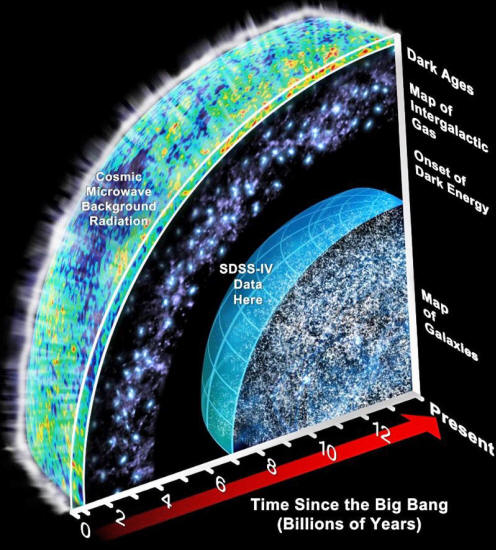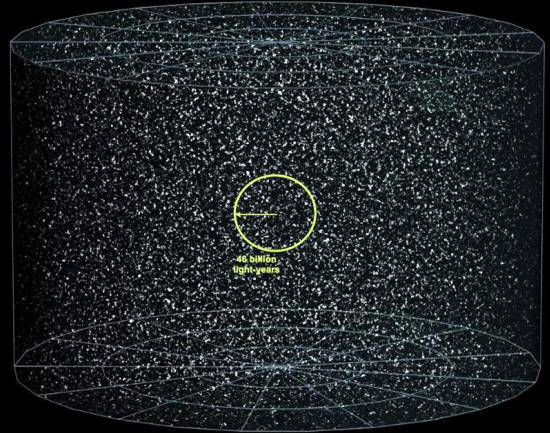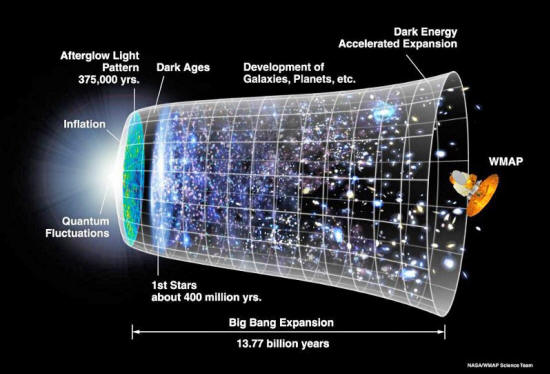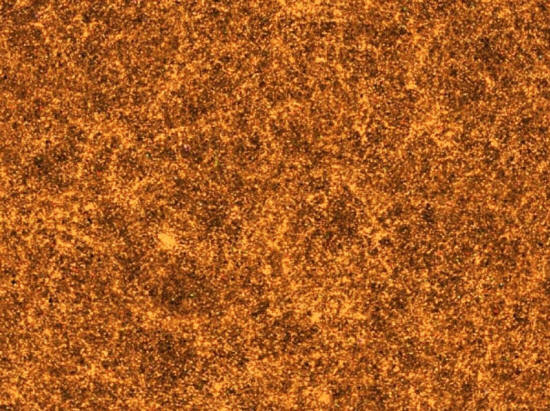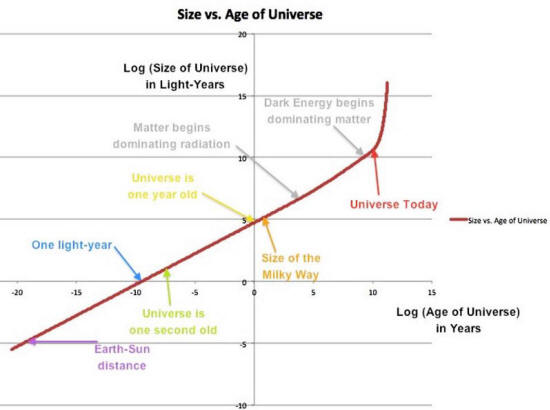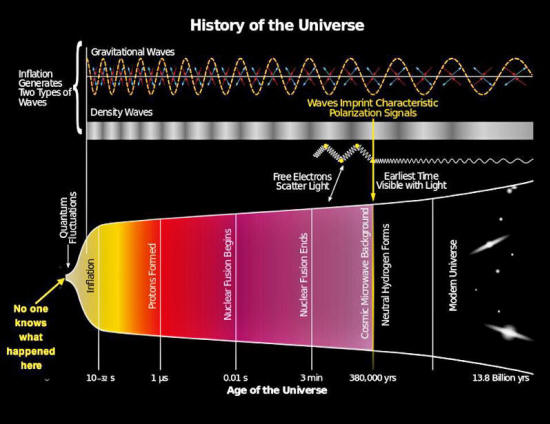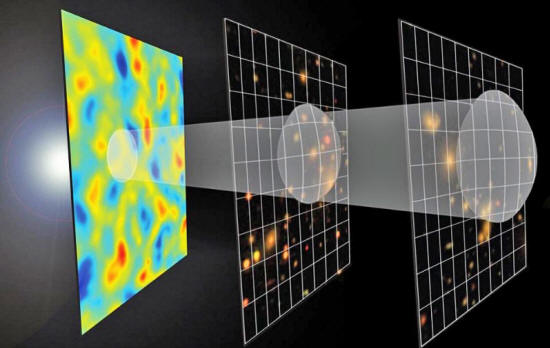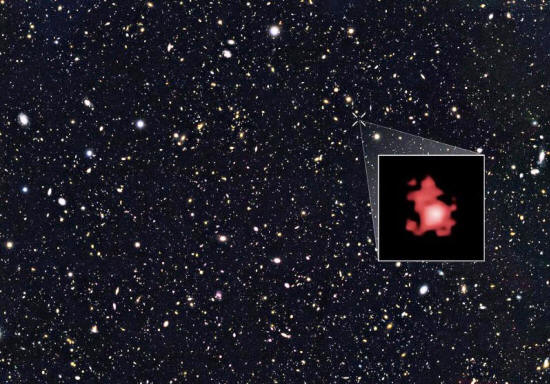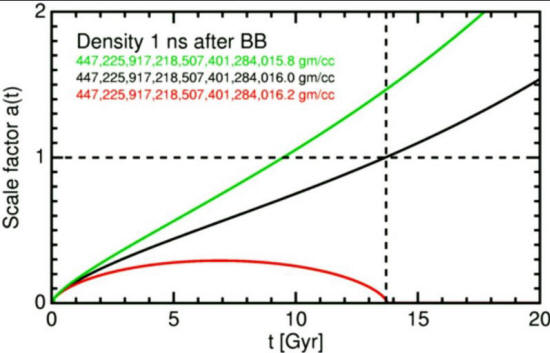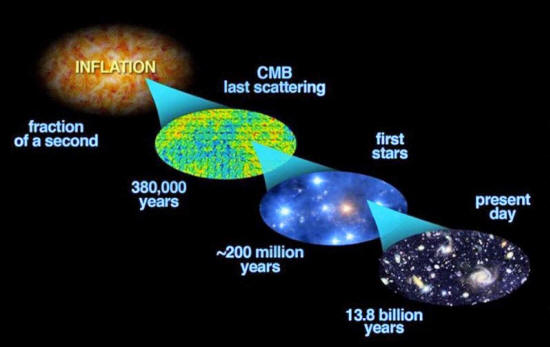|
from
Medium Website
objects tens of billions of light years away, but even with ideal technology, there will be a large distance gap between the farthest galaxy and the Big Bang.
Image
credit: Sloan Digital Sky Survey (SDSS). the greatest telescopes imaginable, there are billions of light years with nothing recognizable by today's standards.
When we look out into the Universe, there's light everywhere we can see, for as far as our telescopes are capable of looking.
But at some point, there's a limit to what we'll encounter. One limit is set by the cosmic structure that forms in the Universe:
Without that ingredient, our telescopes can't detect anything.
But another limit, if we can use astronomy to go beyond starlight, is the limit of how much of the Universe is accessible to us since the Big Bang.
These two values might not have much to do with one another, and that's what Oleg Pestovsky wants to know!
The first thing we need
to think about is exactly what happens in our Universe, moving
forward, from the moment of the Big Bang.
The observable Universe might be 46 billion light years in all directions from our point of view, but there's certainly more, unobservable Universe, perhaps even an infinite amount, just like ours beyond that.
Image credit: Frédéric MICHEL and Andrew Z. Colvin, annotated by E.
Siegel.
Beyond what we can see, there's very likely more Universe out there, and as time goes on, we'll be able to see more and more of it, as light from more distant objects finally reaches us after a cosmic journey taking billions of years.
Seeing what we do in the Universe (and not more, and not less) is possible because of a combination of three things:
The timeline of our observable Universe's history.
Image credit: NASA / WMAP science team.
If we want to know what the Universe was like at any earlier time, all we need to do is observe what the Universe is like today, measure all the relevant parameters, and calculate what it was like in the past.
There's a lot we have to observe and measure to get there, but Einstein's equations, difficult though they are, are at least straightforward. (The derived results are two equations known as the Friedmann equations, and solving them is a task every graduate student in cosmology becomes intimately familiar with.)
And, quite honestly, we've made some incredible measurements about the Universe.
we can see out into the depths of space. What's mapped in this image are hundreds of thousands of galaxies, where each pixel in the image is a unique galaxy.
Image
credit: SDSS III, data release 8.
And just from that information, extrapolating backwards in time, we can decipher both how big the Universe was and how fast it was expanding at any point in its cosmic history.
observable Universe vs. the passage of cosmic time. This is displayed on a log-log scale, with a few major size/time milestones identified.
Image
credit: E. Siegel.
That's the distance that if, at the instant of the Big Bang, the original location-in-space of an imaginary particle traveling at the speed of light would be at today if it were to reach us right now, 13.8 billion years later.
In principle, that's where any gravitational waves left over from cosmic inflation - the state prior to the Big Bang that set it up and provided its initial conditions - would originate from.
are the farthest signal back in time humanity can conceive of potentially detecting, which originate from the end of cosmic inflation and the very beginning of the hot Big Bang. Image credit: National Science Foundation (NASA, JPL, Keck Foundation, Moore Foundation, related)
Funded
BICEP2 Program; modifications by E. Siegel.
When the Universe was about 380,000 years old, the leftover radiation from the Big Bang stopped scattering off of free, charged particles as they formed neutral atoms.
These photons, once neutral atoms form, continue to redshift with the expanding Universe, and can be seen with a microwave or radio telescope/antenna today.
But because of how rapidly the Universe expanded back in the earliest stages, the "surface" we see this leftover glow at - the cosmic microwave background (CMB) - is already only 45.2 billion light years away.
The distance from the beginning of the Universe to where the Universe is at 380,000 years of age is already 900 million light years!
is actually leftover photons from the Big Bang, released at the instant they last scattered off of free electrons. Although that light travels for 13.8 billion years before reaching us, the expansion of space causes that location to be, at present, 45.2 billion light years away. Image credit: E.M. Huff, the SDSS-III team and the South Pole Telescope team
Graphic
by Zosia Rostomian.
While simulations and calculations indicate that the very first stars may have formed when the Universe was between 50 and 100 million years old, and the very first galaxies at around 200 million years, we haven't been able to see back that far just yet. (Although, hopefully, with the James Webb Space Telescope launching next year, we soon will!)
The current cosmic record-holder, shown below, is a galaxy from when the Universe was 400 million years old:
However, that galaxy, GN-z11, is only located 32 billion light years away:
GN-z11, in the GOODS-N field as imaged deeply (but not the deepest-ever) by Hubble. Image credit: NASA, ESA,
and P.
Oesch (Yale University).
The expansion rate has been dropping in a tremendous fashion over time. At the time galaxy GN-z11 existed in the state we see it, the Universe was expanding 20 times faster than it is today.
When the cosmic microwave background was emitted, the Universe was expanding 20,000 times faster than it is today.
And at the moment of the Big Bang, to the best of our knowledge, the Universe was expanding some 1036 times faster, or 1,000,000,000,000,000,000,000,000,000,000,000,000 times faster than it is today.
The Universe's expansion
rate has been slowing down tremendously over time.
If the Universe had even slightly too much matter or radiation in the early stages, it would have recollapsed billions of years ago, and we wouldn't exist.
If the Universe had slightly too little matter or radiation early on, it would have expanded too quickly for particles to find one another and even form atoms, much less complex structures like galaxies, stars, planets and humans.
The cosmic story that the Universe tells to us is one of extraordinary balance, and one where we actually get to exist.
the expansion rate and the total density in the Universe is so precarious that even a 0.00000000001% difference in either direction would render the Universe completely inhospitable to any life, stars, or potentially even molecules existing at any point in time.
Image
credit: Ned Wright's Cosmology tutorial.
That corresponds to a distance from us of between 37 and 35 billion light years, placing the distance from the farthest galaxy of all to the edge of the observable Universe at 9-to-11 billion light years today.
That's incredibly far, and points to one incredible fact:
That first 1% of the Universe's age is responsible for approximately 20% of the Universe's total expansion!
is filled with a number of fantastic events, but since inflation ended and the hot Big Bang occurred, the expansion rate has been dropping precipitously, and slowing its rate of descent as the density continues to drop. Image credit: Bock et al. (2006, astro-ph/0604101);
modifications by E. Siegel.
But the size of the Universe today is evidence of something else incredible:
As time goes on, the Universe will continue to expand farther and farther, and by time it's around ten times its current age, distances will have expanded so much that no galaxies beyond our local group will be visible, even with the equivalent of the Hubble Space Telescope.
Enjoy all we can see today about the great variety of what's present on all cosmic scales.
It won't be around
forever...!
|


